Winter is not an easy time for garden birds. In this cold season, finding food is their main difficulty. While waiting for spring, which brings back insects and early fruits, it is important to help our feathered friends feed. This is especially true when living in an area where frost and snow are common. And to give them a helping hand, nothing beats making seed balls with pine cones! It is also a fun and easy activity to do, even with young children. Discover our illustrated tutorial to make pine-cone seed balls for garden birds.
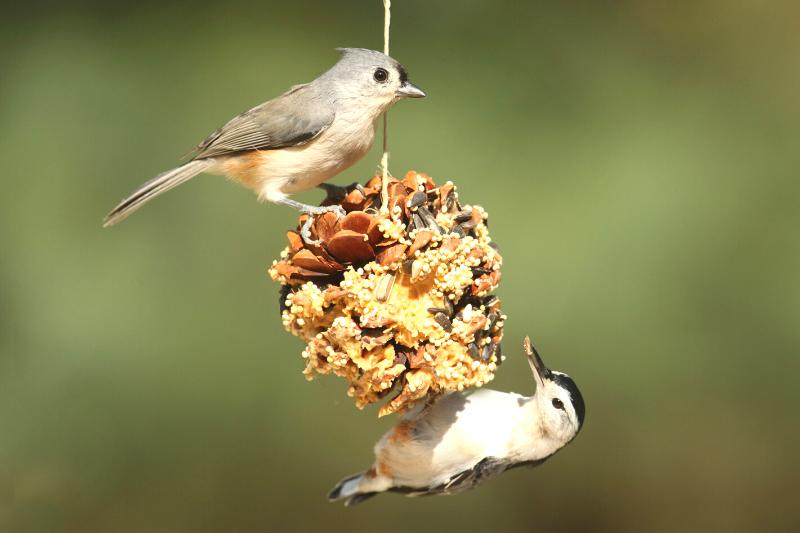
Why using pine cones?
- Pine cones provide a perch for birds so they can sit and peck at the seeds. Species such as great tit, robin, house sparrow and chaffinch enjoy feeding from a height.
- They are very easy to fill with seeds and, from my personal experience, one of the simplest hanging feeders to make with children.
- Pine-cone seed balls also avoid using filaments. Indeed, filaments are a real hazard for birds, as their small feet can get caught in the mesh. Birds trapped this way can perish very quickly, often in just a few hours.
- Birds such as blackbirds, jays, crows and rooks also eat pine cones.
What do I need?
- Pine cones
- Seeds for garden birds. Prefer a varied seed mix to attract as many species as possible. You can also add some sunflower seeds and peanuts.
- Unsalted vegetable fat (margarine). Do not use animal fats, such as lard, or butter, which are very bad for birds.
- String or ribbon
- Optional :
- Unsalted sunflower seeds and peanuts
- Seasonal berries found in the garden or on walks, such as hips, Holly, Hawthorn and Berberis
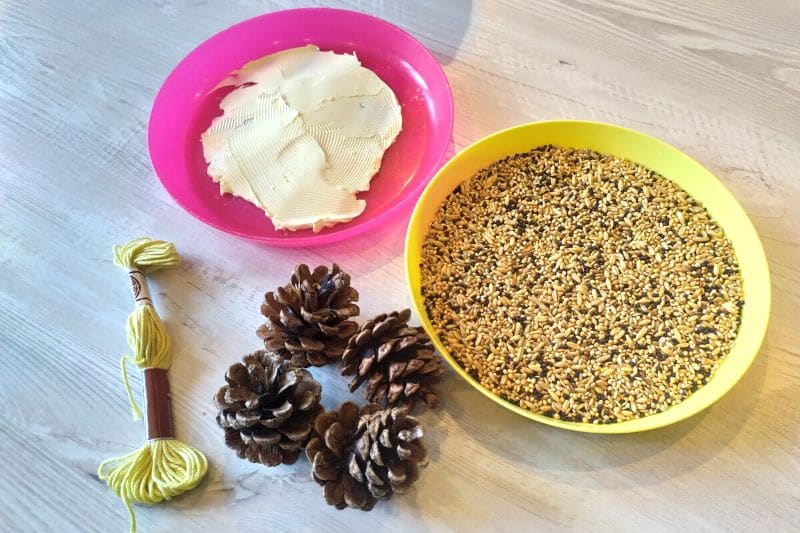
How to make a seed ball from a pine cone?
Tips before you start:
- As you have probably noticed, when it is cold pine cones stay closed. Place them in a warm room for a few days, ideally near a heat source or radiator, to encourage them to open. Once open, they will take on their seed coating more easily.
- Take the margarine out of the fridge and leave it at room temperature for one to two hours before starting your activity.
Steps to make your pine-cone seed balls:
1- Spread the margarine on a shallow plate.
2- Pour the bird seeds onto a second shallow plate.
3- Roll the pine cone in the fat.
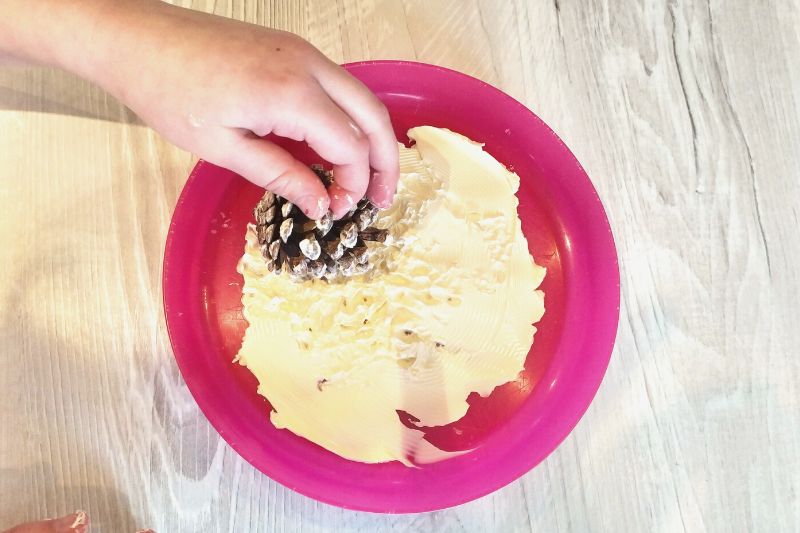
4- Then roll it in the plate of seeds.

5- Once your pine cones are well covered in seeds, place them in the fridge for at least 6 hours to harden the fat.
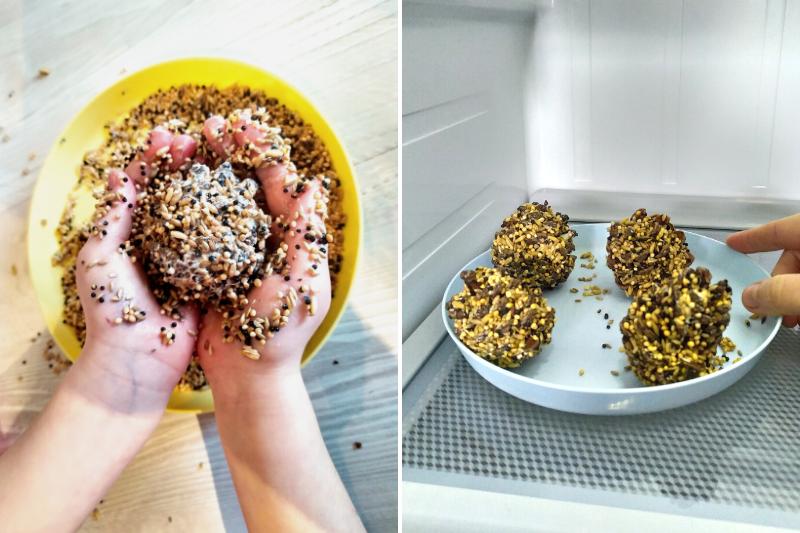
6- Then tie a ribbon or string to the pine cone so you can hang it up.
7- Hang your pine cones from tree branches in your garden or place them in bird feeders.
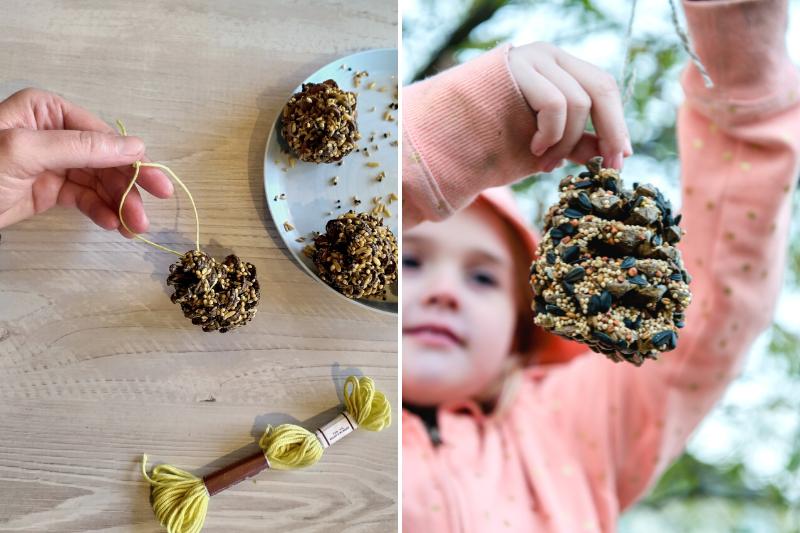
Tips and advice
- It is recommended to feed garden birds when it becomes difficult for them to find food, from October until spring returns (and insects), around April, though this depends on region.
- It is not often considered, but birds also need water in winter, so place a water dish in the garden. Tip: to stop the water freezing, place a floating ball in the dish. The ball will limit ice formation.
- Check the condition of the seeds from time to time to avoid any risk of mould.
- Do not use dry bread or rusks to make your seed balls. These dry foods can swell in the poor birds' stomachs.
- Also do not use salted seeds, such as salted peanuts.
- In spring, pine cones abandoned by birds will be appreciated by some species of insects and larvae as shelter and food. Likewise, fungi and bacteria can also help decompose old pine cones by colonising and breaking them down.
Also discover our tutorials to make a hanging seed feeder for birds in winter and how to make a bird feeder with oranges.































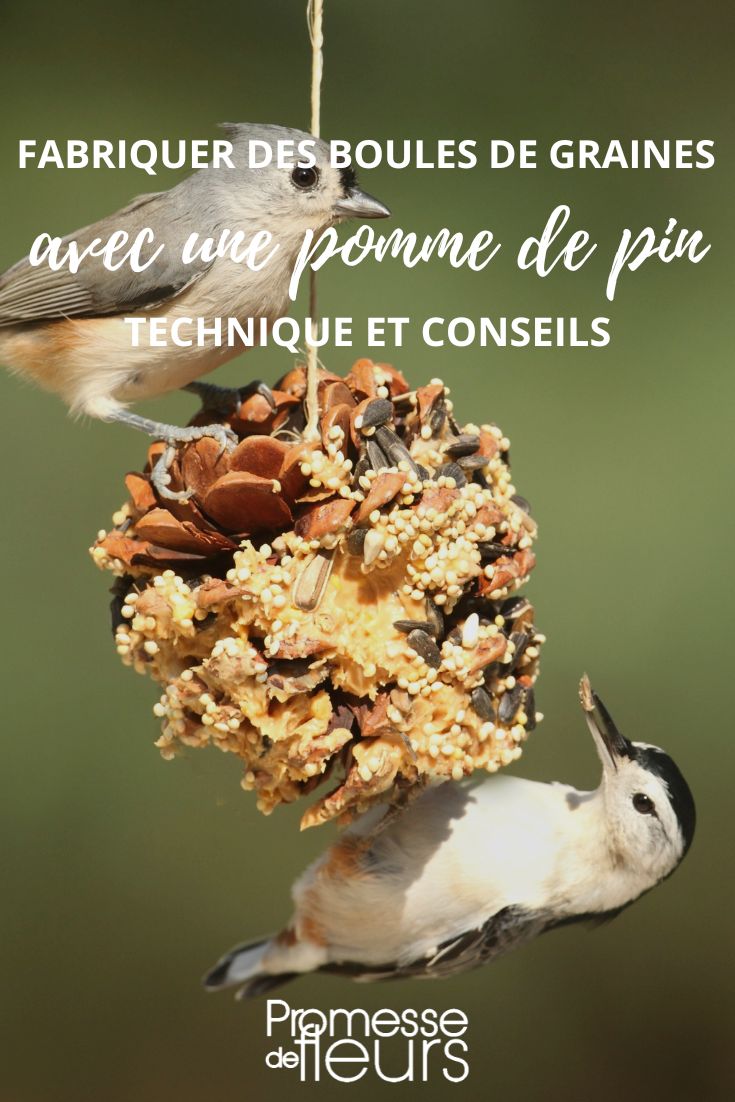
Comments